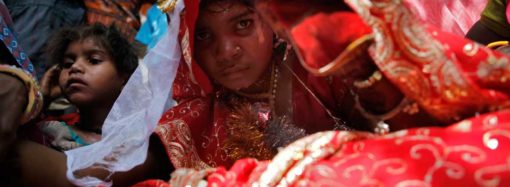Will the new marriage law do more harm than good?
A child marriage is a marriage contracted between a male under 21 and a female less than 18 years of age according to Section 2 of the Child Marriage Restraint Act 1929. Till now, for a legal marriage, a boy has to be of 21 years of age during the time of the marriage and a girl whose age is 18.
But the new draft law does not set any minimum age for the “exceptional cases” where child marriage below 18 would be permitted. The law mentions “special circumstances” which may relate to accidental or unlawful pregnancy for example.
Human Rights Watch criticised the draft, worrying it would weaken the present law and parents might be led to the misconception that child marriage is acceptable.
The question arises: What would be the impact of having no minimum age set?
Being a Muslim majority country, Bangladesh separately recognises personal law and Muslim family law. Most cases regarding marriages are held in family law courts. According to the Majority Act 1875, a person is an adult at 18, and if not, they are to be represented by their guardians. The Child Marriage Restraint (Amendment) Act 1984 confirms the marriageable age is 18 for girls and 21 for boys.
But Muslim law only presents the girl and boy with one condition for a valid marriage: The attainment of puberty or maturity or menstruation — at nine for girls, and 12 for boys.
There are, in fact, religions where child marriage is a permissible ritual.
A strict child marriage law may interrupt such religion rituals resulting in the direct violation of article 18, the Universal Declaration of Human Rights, section 2A of the Constitution of Bangladesh, where it is mentioned that the state shall ensure rights in practice of religions. The health of the girl becomes the biggest area of concern here, which gets priority over religion, as chances of pregnancy and other conjugal effects, at a tender age, increases.
There are, however, families these days in which couples who are married relatively early don’t start living together before their studies are completed, without any legal binding whatsoever, only due to their values. But such cases are seen only in the urban areas and within educated families. The scenario is quite different when in rural areas.
Marriages without the consent of the children and marriages arranged according to guardians is another worry.
A marriage without consent is not a marriage in the eyes of the law. But people’s exiguous knowledge on the law deters these provisions from becoming popular.
Only time will tell what the effects of the new draft will be. Taking special circumstances into consideration is always a praiseworthy initiative by law-makers, but leaving out the bad impacts is a sure-fire way to court disaster
Enforcement of law is instrumental in ending child marriage. That said, a legal system must not consist of vague laws which have the scope of perplexing jurists. Terms like “exceptional cases” or “special circumstances” should be defined in a frame by stating the tentative situations that may occur.
The term “unlawful pregnancy” arises confusion. But, if society needs a law just to ensure a girl, who has conceived without marriage or is a victim to rape, is protected by “providing” her with a husband — because of the notion that a girl alone can not maintain children or because society is yet to get used to seeing single mothers — then developments need to be made first in that society itself, rather than introducing new laws or amending them.
Even if the mother or the pregnant girl wants to be married, more often than not, victims have been seen to be married off to the rapist or a non-competent partner. NGOs and NPOs working against child marriage would have to work with adequate foresight of these outcomes, if the loopholes are not properly taken into consideration in the final statute.
Bangladesh would not be the first country which has no minimum age for exceptional cases — even certain states in the US don’t have a minimum age set for marriage.
Uganda, Malawi, Togo, Madagascar, Bahrain, Oman, Nepal, Iran, and Panama don’t have a fixed age for marriage either.
India, on the other hand, has had 780,000 child marriages since 2001 despite the existence of the Child Marriage Restraint Act of 1929. Here, the socio-economic conditions, customs, and other factors work in respective countries to contribute to developments. We cannot compare a law with other countries and judge its consequences without looking into it more deeply and within the correct context.
Only time will tell what the effects of the new draft will be. Taking special circumstances into consideration is always a praiseworthy initiative by law-makers, but leaving out the bad impacts is a sure-fire way to court disaster.
Raihan Rahman Rafid is a freelance contributor.
Source: Dhaka Tribune










